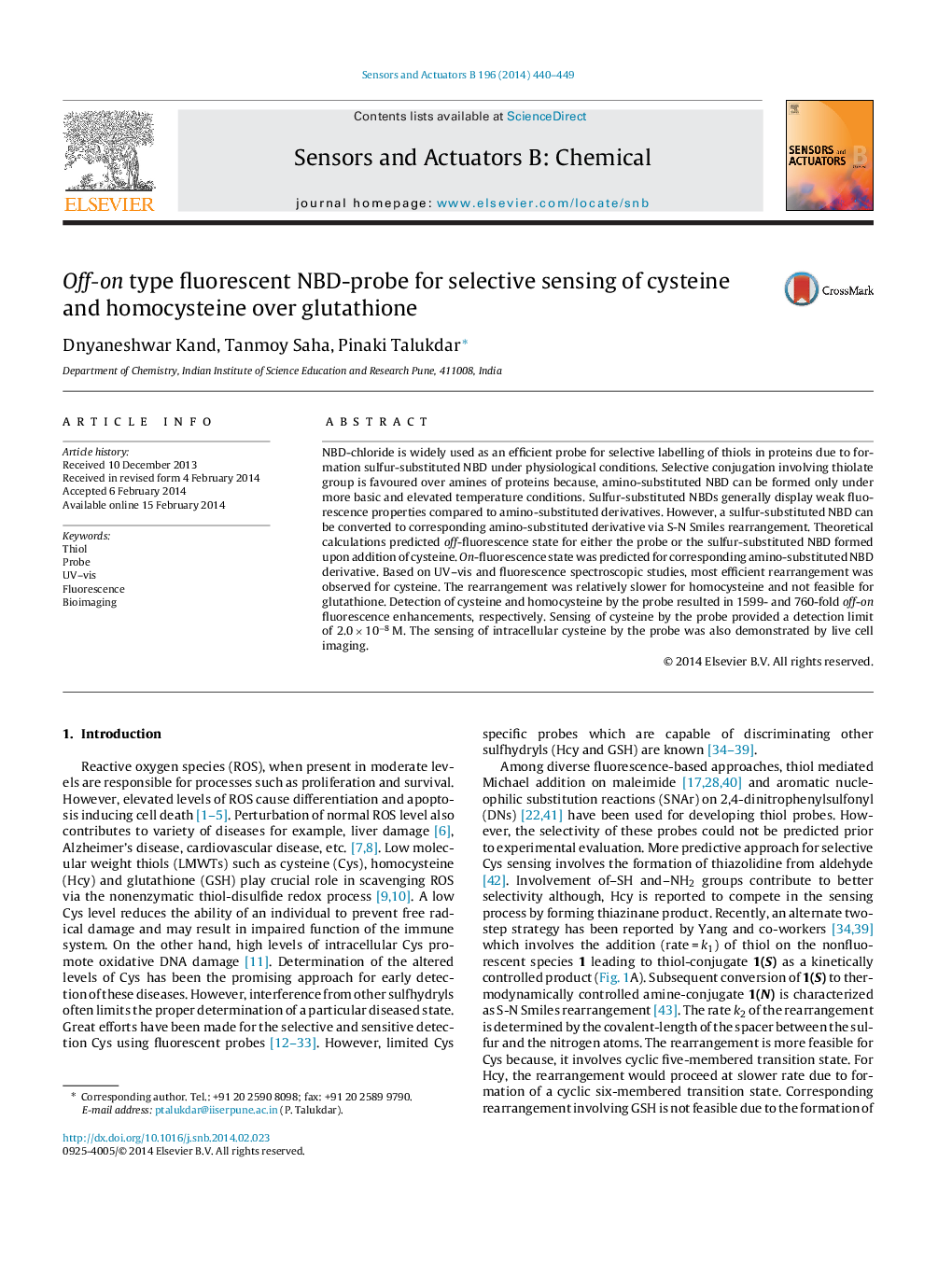| کد مقاله | کد نشریه | سال انتشار | مقاله انگلیسی | نسخه تمام متن |
|---|---|---|---|---|
| 750927 | 1462094 | 2014 | 10 صفحه PDF | دانلود رایگان |

• Application of NBD-Cl for selective sensing of NBD-Cl for selective detection of Cystine and Homocysteine over Glutathione was demonstrated.
• Synthesis of control compounds necessary to establish the mechanism has been carried out.
• UV–vis and fluorescent spectroscopies were used to establish the proposed mechanism.
• Sensing of Cys by NBD-Cl was selective and sensitive with 1592-fold fluorescent enhancement with a detection limit of 2.0 × 10−8 M.
• Application of the probe in live-cell imaging was demonstrated.
NBD-chloride is widely used as an efficient probe for selective labelling of thiols in proteins due to formation sulfur-substituted NBD under physiological conditions. Selective conjugation involving thiolate group is favoured over amines of proteins because, amino-substituted NBD can be formed only under more basic and elevated temperature conditions. Sulfur-substituted NBDs generally display weak fluorescence properties compared to amino-substituted derivatives. However, a sulfur-substituted NBD can be converted to corresponding amino-substituted derivative via S-N Smiles rearrangement. Theoretical calculations predicted off-fluorescence state for either the probe or the sulfur-substituted NBD formed upon addition of cysteine. On-fluorescence state was predicted for corresponding amino-substituted NBD derivative. Based on UV–vis and fluorescence spectroscopic studies, most efficient rearrangement was observed for cysteine. The rearrangement was relatively slower for homocysteine and not feasible for glutathione. Detection of cysteine and homocysteine by the probe resulted in 1599- and 760-fold off-on fluorescence enhancements, respectively. Sensing of cysteine by the probe provided a detection limit of 2.0 × 10−8 M. The sensing of intracellular cysteine by the probe was also demonstrated by live cell imaging.
Figure optionsDownload as PowerPoint slide
Journal: Sensors and Actuators B: Chemical - Volume 196, June 2014, Pages 440–449